The latest news of the 2018WBrC World Coffee Brewing Competition, how does a coffee competition perform?
Professional coffee knowledge exchange more coffee bean information please follow the coffee workshop (Wechat official account cafe_style)
In the latest news, the preliminaries of the World Coffee Brewing Competition (WBrC) and the World Coffee draw Competition (WLAC) held in Brazil are over. Liang Fan, who participated in the WLAC on behalf of China, successfully advanced to the top six (from dishwasher to bar director to champion of pull flowers, post-90s barista Liang Fan, representing China to participate in Brazil's WLAC today), and in the field of WBrC, the contestant "Liu Bangyu" from Taiwan also advanced smoothly.

The top six of WBrC: the finalists are from Greece, Japan, Malaysia, Singapore, Switzerland and Taiwan.
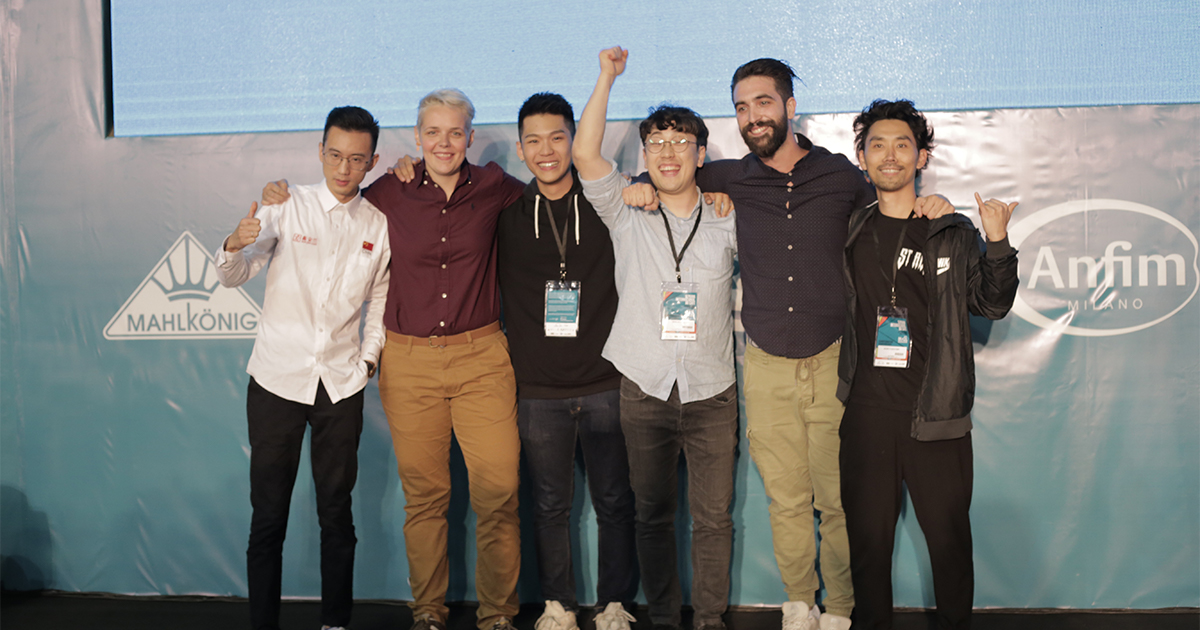
Although du Jianning of China failed to make the top six in this WBrC, we can see that the sweat and effort behind the contestants can not be imagined by ordinary people. WBrC is the peak performance of a coffee competition.
Today, the editor shares with you the scoring items, methods, standards and spirit of the World Coffee Brewing Competition (WBrC). Let's see what kind of tests and challenges the coffee masters who are really standing at the top of the world will accept.

World Brewers Cup Standards, Definitions and Scoring Criteria
World Coffee Brewing Competition is divided into two stages, preliminary and final designated brewing and optional brewing two, and in the final to optional brewing mainly, that is, want to see each contestant in the same coffee beans through different brewing methods to present coffee flavor, optional brewing is to use their own coffee beans brewed out,
designated brewing
A. "Designated brewing" is one of the two brewing events of the brewing competition.
B. Contestants have 8 minutes to prepare and 7 minutes to compete to prepare and present three cups of coffee, and each of the three judges has a cup of coffee brewed separately.
C. All competitors will use the same batch of unground coffee beans, grinder, brewing water and standard cups for brewing the designated items, all provided by the Organiser. On the day of the designated brewing event, each contestant will be provided with a packet of 250 grams of practice beans. Each competitor will be provided with a 250 gram bag of beans on the competition table before the start of the designated preparation time.
D. Competitors may prepare and present coffee drinks to the judges only after the start of the competition as instructed by the official. Once the competition time is over, the competitor must pour approximately 100 ml of brewing water from the kettle (or container) used to brew the competition coffee into the container designated by the conference. Contestants should wait for the referee to taste the brewing water and coffee and indicate that they can clean up before tidying up and cleaning the competition area.

e. The drinks will be evaluated according to the World Cup cooking competition (refer to the following relevant paragraphs of these regulations).
f. Additional information (visually, verbally, or tactile, etc.) will not be included in the score and should not be presented or presented when a specified cooking item is carried out.
Optional cooking
Contestants have 5 minutes of preparation time and 10 minutes of competition time to perform, prepare and present three cups of coffee, and each of the three judges has a cup of coffee brewed independently.
The finalists will use their own coffee beans in their own brewing events, which will be presented to the judges and combined with the elements of the performance to deepen the whole coffee experience.
Definition of coffee beans for competition
a. Coffee beans refer to the roasted seeds of the fruits of the genus Coffee.
b. In the process of harvesting, processing into raw beans, roasting into ripe beans, grinding into powder, and extracting into beverages in the cup, coffee fruit (coffee cherry) shall not add any additives that will affect the flavor or color, or any substances, liquids, powders, etc., that contain aroma. However, it is permissible to use substances (such as water, yeast, coffee, coffee by-products, fertilizers, etc.) for the growth or production of coffee trees in the process of growing, planting or harvesting raw beans.
c. The designated cooking beans provided by the Congress will use medium to medium roasting grade coffee beans (Agtron caramelization index 60 to 80), which will be baked within 7 days before the competition day, without major baking defects such as baked or burnt. If there is more than one baked batch of designated beans, each batch will be specially marked, or all baked batches will be fully mixed, and all designated brewed coffee beans will be confirmed to be consistent and packaged separately.
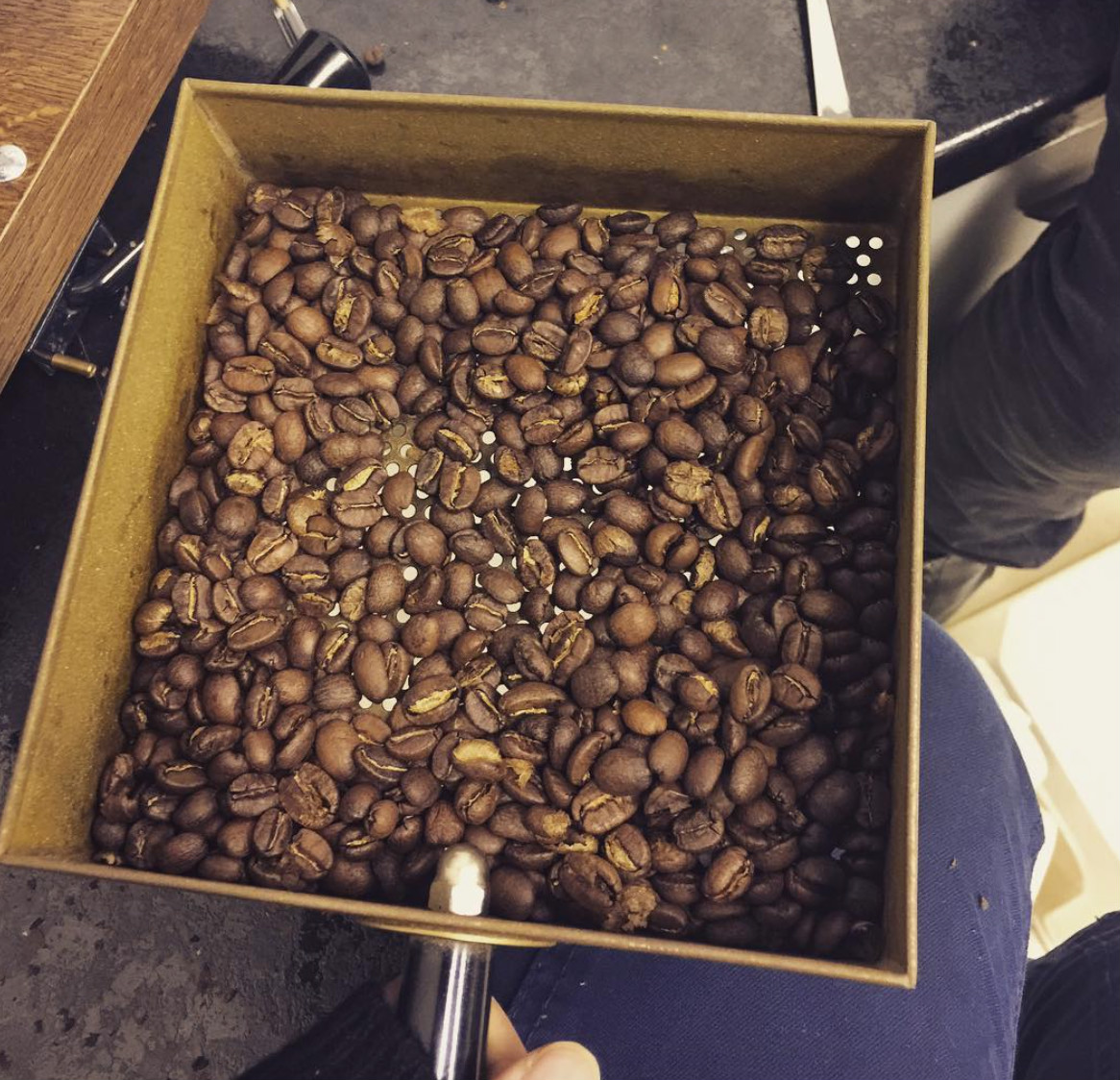
Definition of beverage
a. Drinks can only be used as a solvent to extract coffee powder. Except for coffee cooked beans and brewing water as defined in the definition, as well as contact with brewing equipment and cups, beverages are prohibited from containing any additives. Before presenting the drink, it is allowed to add extra water (bypass) to adjust the coffee concentration.
b. The total soluble solids concentration of beverages is expected to be less than or equal to 2.00% (20000ppm). This restriction is to distinguish brewing coffee drinks from espresso or other extracted coffee, thus limiting the drinks in this competition to the general perception of "hand-brewed coffee".
c. Contestants will prepare and present three cups of hot coffee, and each of the three judges will have a cup of individually brewed coffee.
d. Each drink must be between 120 and 375 milliliters. If the volume of the drink is less than 120 or more than 375 milliliters, the cup will be disqualified and will not be graded.
e. Contestants are not required to grade all the portions made when making the drink. However, each judge should receive no less than 120 milliliters of coffee drinks.
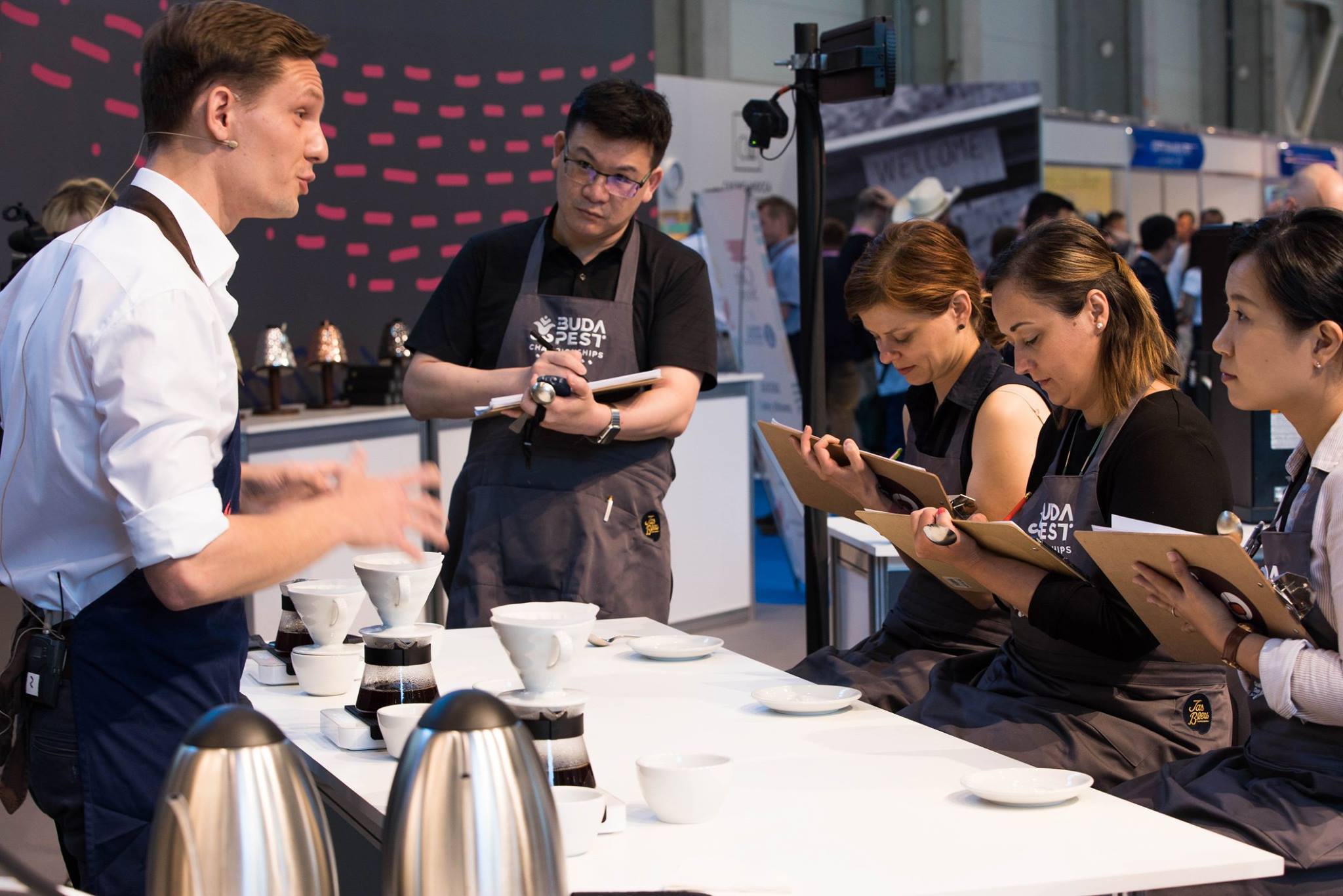
Preparation of coffee
a. Each cup of coffee brewed in the competition must be a separate drink, one for each judge.
B. "individually made" is defined as a cup of coffee extracted with a certain amount of water. Therefore, contestants are not allowed to submit a cup of brewed coffee to more than one judge (for example, contestants cannot brew one liter of French filter pressure at a time and divide it into three cups to each judge. The permitted way to get out of the cup is to make three French filters respectively.

c. "extraction time" is defined as the moment the water touches the coffee powder until the contestant stops cooking. The brewing stops when the extracted drink is completely separated from the coffee powder layer (the water absorbed by the coffee grounds is not part of the "extracted drink"), or when the competitor stops letting the extracted coffee flow into the cup set, either occurs first. The water used to wash the filter paper / screen is not "cooking water".
d. In the two competition stages, if the extraction starts before the start of the competition time, the drink will be disqualified and will not be given points.
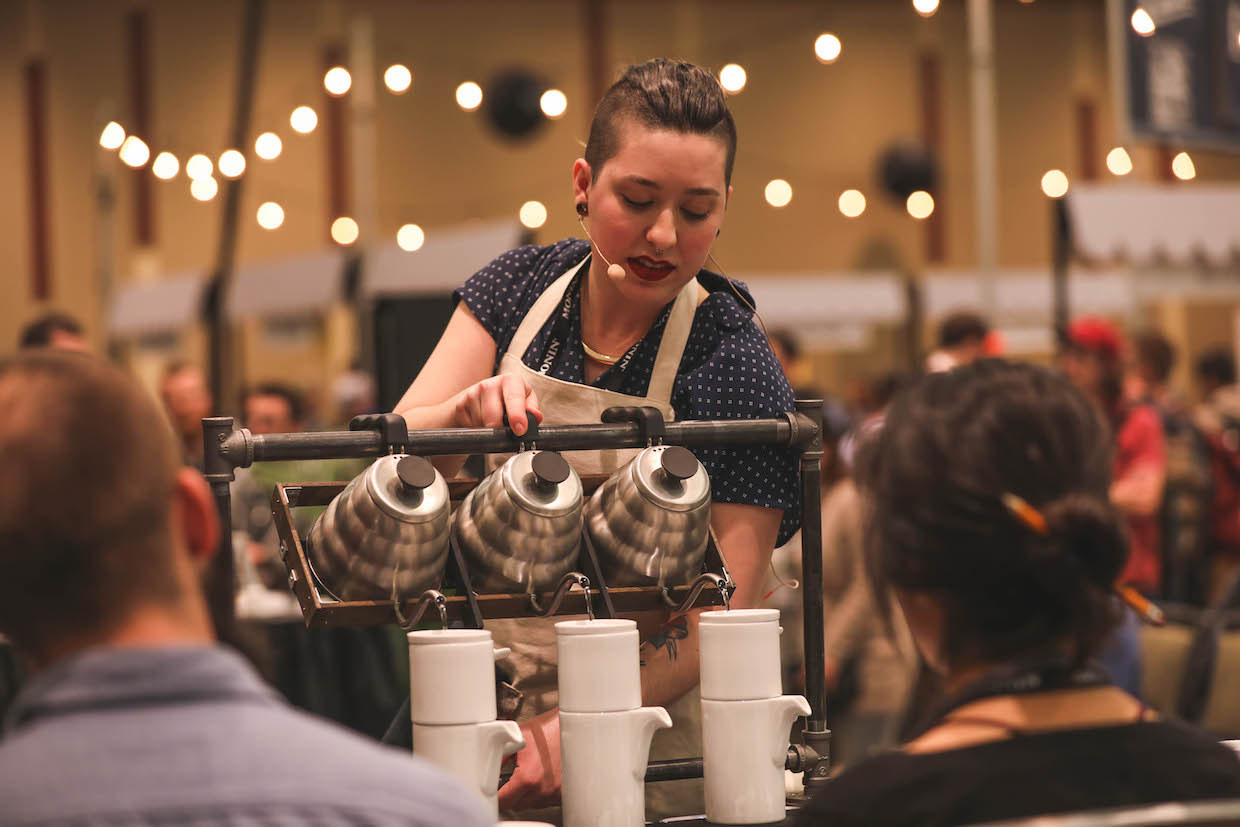
Specify the score of the cooking project
The evaluation criteria and procedures for the specified cooking are described in detail below.
1. The cup tester and spit cup judge may choose to use the cup tester to obtain the coffee drink from the cup finally submitted by the contestant and sip or taste it directly from the cup finally submitted by the chooser. Similarly, the judges can choose to spit out or drink the drink. In principle, the judges are advised (rather than required) to use cup spoons, sip, taste, spit or drink coffee as far as possible throughout the competition, unless the contestant gives clear instructions to drink.
two。 Observe the contestant's cooking process when the contestant comes on the stage to make the designated cooking, the judge may not observe or examine the contestant and the contestant's process of preparing the drink, so as to avoid making assumptions or prejudices about the presented drink. Screens or screens can be used to completely isolate the designated hand-punching area for review and production.
Scoring scale
The scoring scale is limited to the following ranges:

Judges must be graded on this scale: good, good, excellent, and excellent. Judges shall not give scores less than 6.00. The degree below "good" is calculated as 6.00 points.
Each scoring item is marked with a horizontal rating scale (from left to right) to evaluate the relative quality felt by the item, and the evaluation of the quality of the cup is based on the understanding of the quality in the evaluation experience.
Some projects also have a straight grading scale. The straight scoring scale (top to bottom) is used to indicate the intensity of the sensory part as a record and reference, and is not included in the score.
After the evaluation is completed, the score will be recorded in the totals column of each form. The scorer will calculate the total score accumulated for each project.
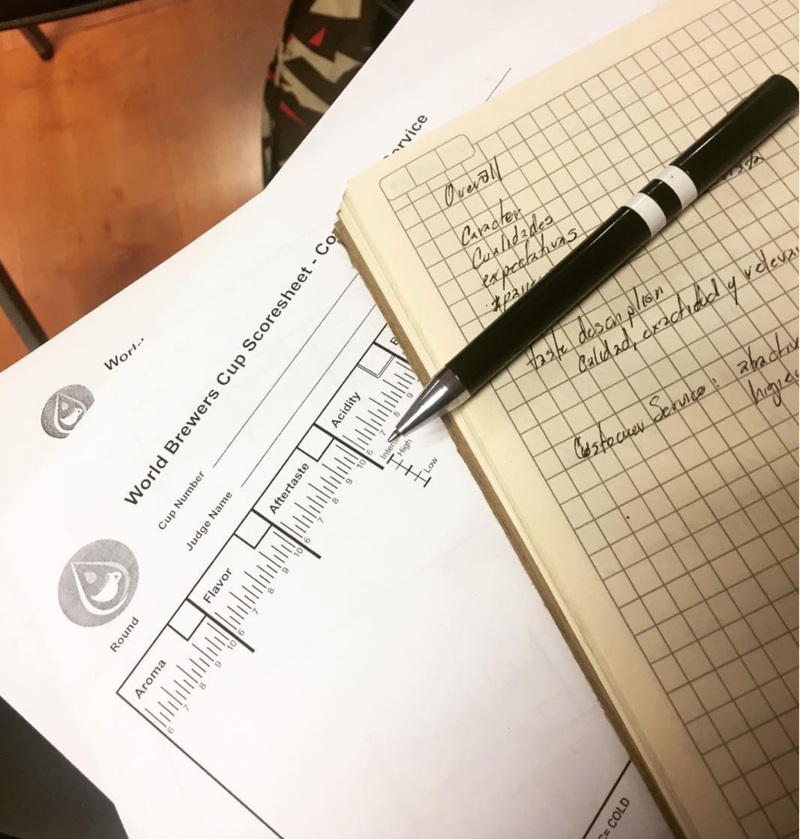
Scoring item
1 Wet aroma, basically, the wet aroma of coffee corresponds to the place where the coffee is produced. In contrast, the intensity of the wet aroma is usually related to the freshness of the coffee, measured by the period between the roasting date and the use date of the coffee, and also affected by the packaging isolation of moisture and oxygen.
2 flavor, flavor represents the main characteristics of coffee, is the "middle" sensory experience, between the wet aroma and acid quality of coffee between the first impression and the last aftertaste. The flavor combines the perception of all taste buds with the impression of coffee after the nose (retro-nasal). The score of the wind item must include the intensity, texture, and complexity of the taste and wet aroma, and all taste buds can participate in this taste assessment through strong sipping.
(3) Yu Yun is defined as the length of time that positive flavor traits (taste and aroma) remain at the back of the tongue after coffee has been drunk or vomited. If the remaining rhyme is short or has negative characteristics, thus reducing the experience of the cup of coffee, you will get a lower score. If Yu Yun improves the experience of the cup of coffee, he will get a high score.
4 sour, sour when it has a positive flavor is usually described as the "brightness, brightness" of coffee, while when it has a negative flavor, it is described as "sour, sour". At best, acidity gives coffee sweetness, lively texture, and flavor traits like fresh fruit, which are usually felt and evaluated immediately when coffee is drunk. However, excessively strong or significant acidity may make people feel uncomfortable, and excessive acidity may not be appropriate for the flavor characteristics of the coffee. The final score marked on the horizontal scale must reflect the acid quality felt by the judges, which is based on the local characteristics of the coffee production place or other factors (roasting degree, brewing purpose, etc.) expected flavor characteristics. When the judges encourage the contestants to present the exhibition coffee, the coffee-related information, including the source, variety and treatment, will be linked and transmitted to the exhibition coffee, the acid strength is high or low, but if the acid quality is good, there will be good results reflected in the score, will also be reflected in the overall feeling.

5 Alcohol thickness, the quality of alcohol thickness is based on the touch of the drink in the mouth, especially between the tongue and the upper jaw.
Coffee with alcohol thickness "heavy, heavy" or "light, light" may get a high score on texture, because the liquid has a good tactile feel in the mouth. However, some "lighter, light" coffee may also have a pleasant feeling in the mouth. Coffee with heavier alcohol thickness or lighter alcohol thickness is likely to get a relatively high score on the texture of alcohol thickness, although the intensity of the two is quite different. The judges encourage the contestants to integrate the origin, variety and processing of the coffee into the coffee show.
6 balance, balance combines all the elements of the coffee, including flavor, aftertaste, acidity, and alcohol thickness to show complementary or contrastive feelings. If the coffee lacks a certain aroma or flavor, or if some characteristics are too strong, the score of balance will be lower.
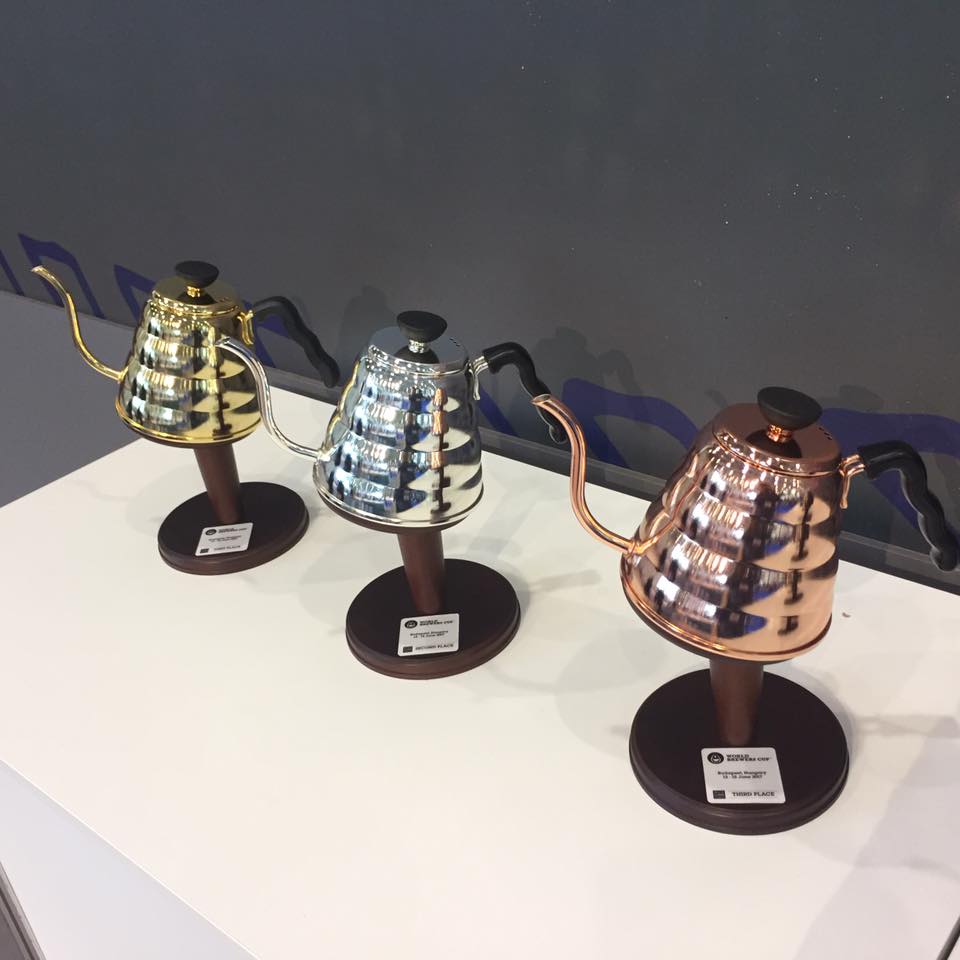
7 the score of "overall impression" is used to reflect the judge's most comprehensive and complete feeling about the brewed beverage. If a coffee drink performs well on many levels, but it is "not in place", it will still get a lower score. To get a high score in this item, it is necessary to fully present the unique local characteristics of a coffee in flavor, and in line with the expectations of its characteristics. In the best example, if a preference cannot be properly highlighted in an individual item, the score on the overall impression may be higher, reflecting the performance of the trait. The project allows the judges to evaluate on the basis of their personal perception.
Beverage scoring criteria
a. When the drink is finally served, the judge must immediately evaluate the performance of the wet aroma. It is important to score this item immediately because the intensity of the aroma weakens as the temperature decreases.
b. A few drinks will be taken as samples to measure the total soluble solids (TDS).
c. Hand-made drinks at this stage may be poured into the conference's standard cup.
D. when the drink is cooled to 70 °C, the beverage will be graded. The coffee liquid is sipped in a cup spoon or directly on the cup, thus allowing the coffee to be dispersed in the mouth with as much cover as possible, especially on the tongue and upper jaw. Since the sense of smell behind the nose is the most obvious at this temperature, the flavor and aftertaste will also be evaluated at this stage.
e. As the coffee continues to cool, the acidity, alcohol thickness, and balance begin to be evaluated. How the flavor, aftertaste, acidity, and alcohol thickness of coffee blend with each other to produce a comprehensive effect, the drinker evaluates the performance at this level.

f. As the coffee cools, the judges will rate each item at three different temperatures:
i. "Hot" is defined as about 70 °C ii. "temperature" is defined as about 40 °C iii. "cold" is defined as between 25 °C and 30 °C.
g. Record the score of the drink with a scoring ruler, draw a line on the strength ruler and circle it to indicate the degree of quality. If the range of the evaluation changes (if the texture of some characteristics increases or decreases after cooling), draw a line on the strength ruler to indicate the new range, and draw an arrow to indicate the direction in which the score was last modified.
h. When the temperature of the drink cools to 25 °C, the score is stopped, and the score of the overall impression is determined by the review after taking into account all the sensory traits.

The judges should clearly mark the scores of "hot", "warm" and "cold" on the horizontal scale in the rating form, which can be represented by the letters H, W and C respectively, or circle and arrow to indicate how the quality changes over time.
The judges will record the sensory evaluation feelings in detail in the note fields on the score sheet. As a reference for scoring and to help contestants understand the evaluation. The judges must limit their content to describe their feelings about coffee drinks from the perspective of sensory evaluation or customers, and avoid critical brewing methods. (for example, a "sharp acid" or "sack smell" is an acceptable description. "it takes too long to cook" or "insufficient extraction" is not an appropriate comment. )
Score of self-made drinks
The beverage scoring items of optional hand flushing are the same as those specified for hand flushing. Contestants can change their sensory assessment by giving clear drinking instructions to the sensory judges so that coffee drinks can be consumed in the way the contestants want. As long as the competitor gives reasonable drinking instructions before the coffee drink is submitted, the sensory evaluation will be conducted in accordance with the instructions.
Once the sensory judges begin to evaluate the final coffee drinks presented by the contestants, the contestants are not allowed to make any changes to the sensory evaluation. The sensory evaluation shall be conducted in accordance with the above three temperature paragraphs. If the competitor gives an evaluation of other temperatures, the sensory evaluation will not be carried out.
Score scale of contestants' performance
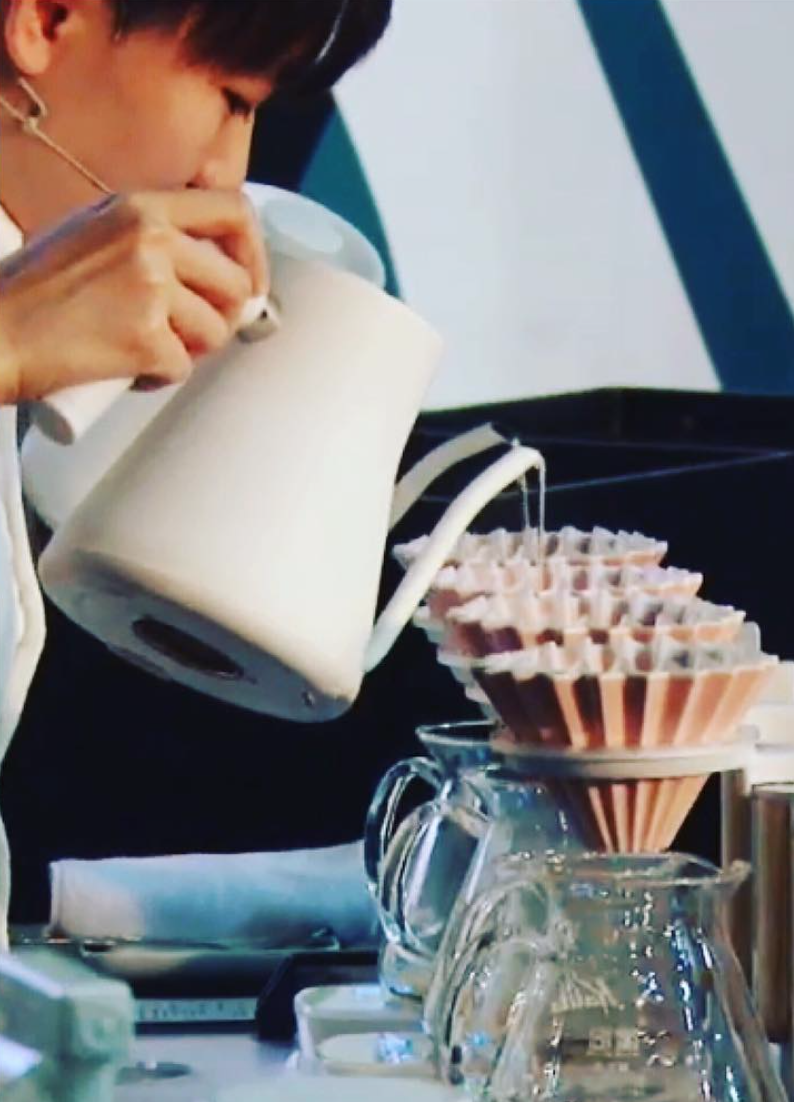
Scoring table for contestants 'performances
Performance scores range from "acceptable"(4 points) to "excellent"(10 points), including "unacceptable"(0 points) as a score for apparent violations of rules, illegality, or failure to meet basic professional or service standards. The judges will mark the score on the score sheet, mark the score of the event on the horizontal score scale, and complete the evaluation after the contestant's performance, indicating the score in the total score column of each event.

The score of the performance part
1 flavor description-contestants are required to describe the flavor and overall texture of the coffee drink. Judges are required to take detailed notes during the evaluation, especially about specific flavors or sensory feelings. When contestants describe the sensory feelings of coffee in detail and accurately, they can get a high score in this item. But the score is measured by the importance and accuracy of these descriptions to the overall quality of the experience, not by the number of descriptions.
Customer service-contestants must provide a good coffee drinking experience in a professional and fascinating way. But the whole presentation does not need to be the complex and formal model of high-end restaurants, but should be closer to the interaction in general coffee shops. If the service improves the physical experience of the whole coffee drinking and even the pure sensory enjoyment, you can get a high score in this project. Proper sanitary cleaning and cleaning of utensils during the show will be considered in this project.
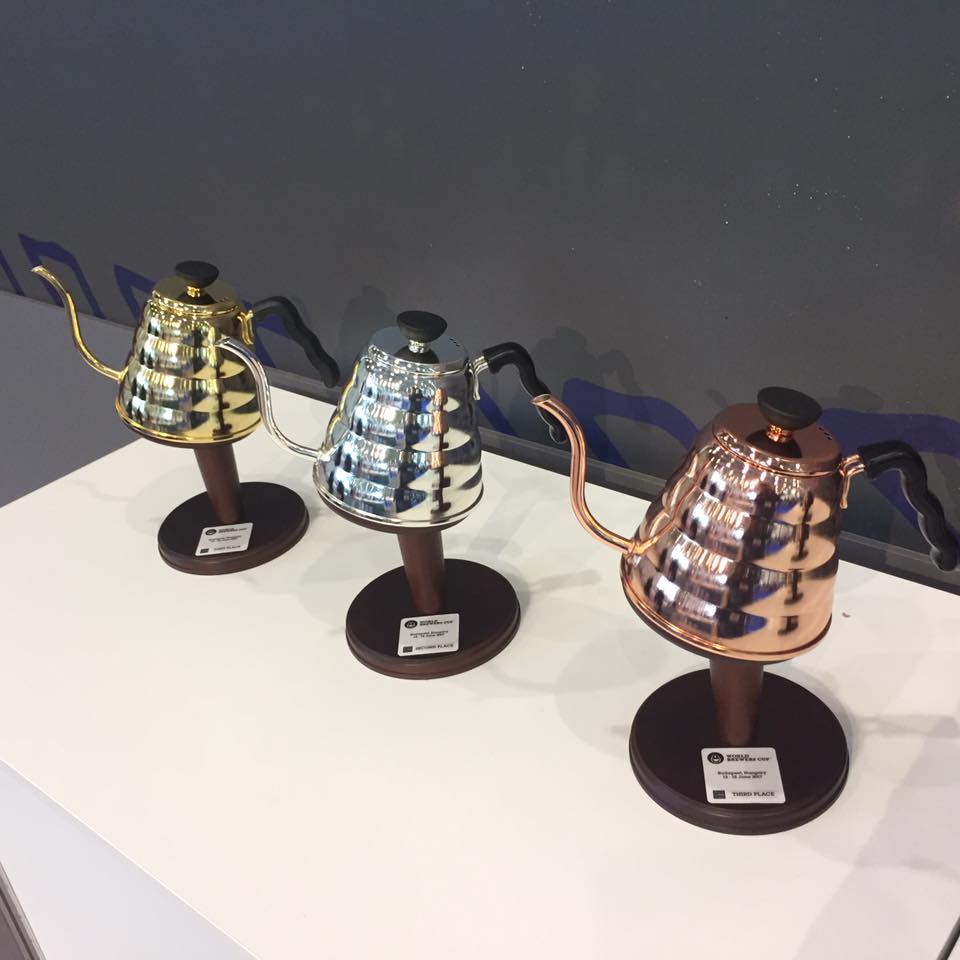
Each player in the same coffee beans through different brewing techniques presented coffee flavor and optional brewing is the use of their own coffee beans brewed, usually the game will use the top rose summer coffee, so there are also people "complain" World Brewing Competition is like "World Rose Summer Competition", indeed in the competition training burned hundreds of thousands in practice, than this competition is not so easy.
Important Notice :
前街咖啡 FrontStreet Coffee has moved to new addredd:
FrontStreet Coffee Address: 315,Donghua East Road,GuangZhou
Tel:020 38364473
- Prev
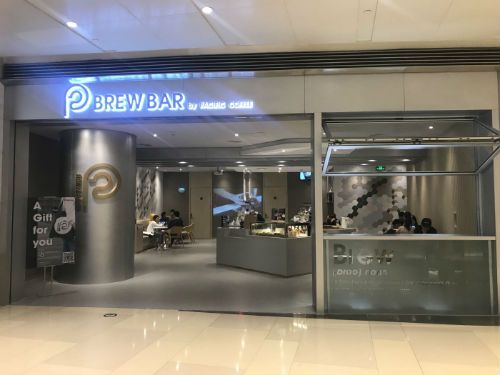
Pacific Coffee localization unfavorable launch upgrade brand to enter the "boutique coffee" market
Professional coffee knowledge exchange More coffee bean information Please pay attention to coffee workshop (Weixin Official Accounts cafe_style) repeatedly tried to introduce local elements such as national wine and tea into the products, but the results were not good. Pacific Coffee tried to enter the boutique market, opened the boutique coffee shop Brew Bar to the International Trade Mall, and marked the growth altitude, processing method, processing station and roasting of coffee beans in hand.
- Next
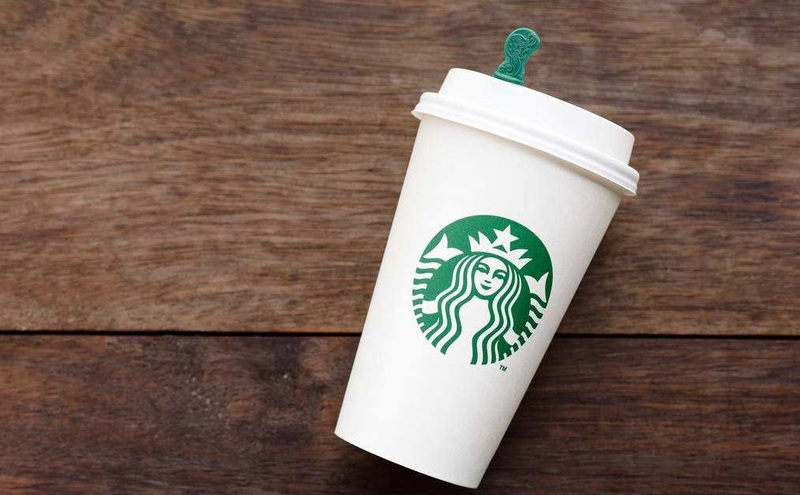
Foreign media: Starbucks plans to lay off 5% of its coffee shop staff worldwide will not be affected
Professional coffee knowledge exchange more coffee bean information please follow coffee workshop (Wechat official account cafe_style) US media quoted Starbucks CEO Johnson, issued an internal memo reported that Starbucks plans to cut 5% of its global workforce. According to the US financial media CNBC, according to NASDAQ:SBUX CEO Kevin Johnson (Kevin Jo)
Related
- What documents do you need to go through to open a coffee shop? coffee shop coffee shop certificate processing process
- How to purchase Coffee beans in small Cafe how to choose a suitable supplier for domestic Coffee supply Company
- How to drink Starbucks Fragrance White Coffee? how to make Australian White Coffee? what Italian coffee beans are recommended?
- The Story of Flora Coffee: the name of Flora Coffee Bean and the implication of the Flowers on Florna Coffee
- How much does a cup of coffee cost? How much is the profit of a cup of coffee? What is the profit of the coffee shop in a year?
- Yunnan small Coffee, known as "fragrant Coffee", introduces the characteristics of Alpine Arabica Coffee producing areas in Yunnan, China
- 2023 latest Starbucks full menu price list how much is a cup of Starbucks coffee what is better to drink the most popular hot and cold drinks recommended
- Starbucks different kinds of Coffee Price list Starbucks menu 2023 Top Ten Best drinks in Starbucks
- Starbucks Spring praise Comprehensive matching Coffee Bean theme Story Packaging implication and taste description
- The cost of a cup of coffee latte American coffee cost price and selling price

